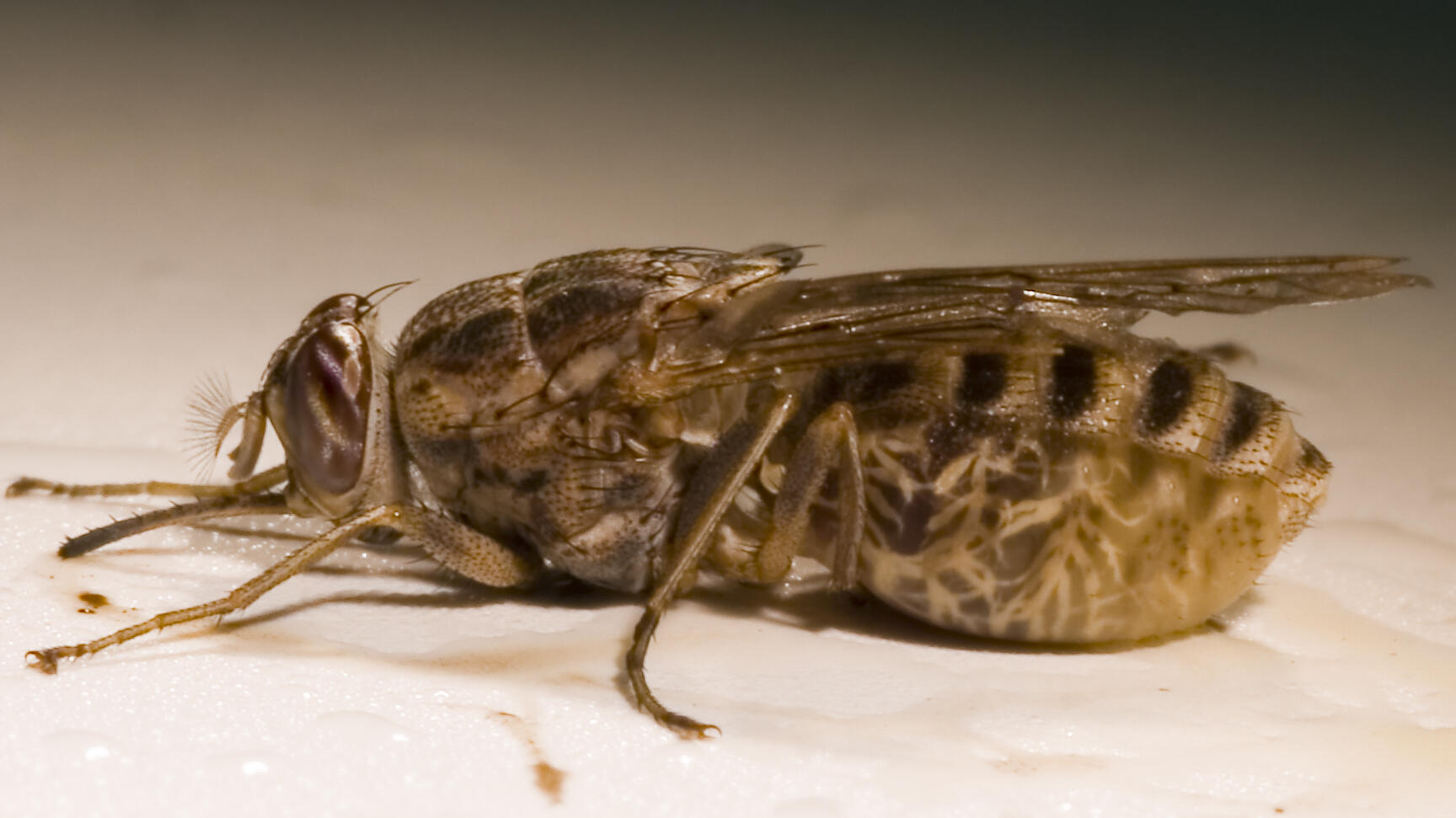
LSTM’s Dr Jennifer Lord is first author on a paper looking at the impact of climate change on the vectors of sleeping sickness in Africa.
The study, published in PLOS Medicine, is based on 27 years of data from Mana Pools National Park in Zimbabwe. The mathematical model developed by Dr Lord and co-authors suggests that temperature increases over the last three decades have already caused major declines in local populations of tsetse flies, thereby providing a first step in linking temperature to the risk of sleeping sickness in Africa.
Dr Lord said: “If the effect at Mana Pools extends across the whole of the Zambezi Valley, then the transmission of trypanosomes is likely to be have been greatly reduced in this warm low-lying region.” While that is good news for the disease situation in Zambezi Valley, “rising temperatures may have made some higher, cooler parts of Zimbabwe, more suitable for tsetse flies.”
Tsetse are blood-feeding insects that transmit trypanosome pathogens which cause the potentially fatal sleeping sickness in humans across sub-Saharan Africa. The parasites also cause a similar disease in livestock, with recent estimates indicating about one million cattle deaths per year.
Researchers from the Liverpool School of Tropical Medicine, the South African Centre of Excellence for Epidemiological Modelling and Analysis (SACEMA) at Stellenbosch University, and the Natural Resources Institute at the University of Greenwich, developed a mathematical model used in the study. The results, which were only made possible because of prolonged laboratory and field measures of fly densities, provided evidence that locations such as the Zambezi Valley in Zimbabwe may soon be too hot to support tsetse populations.
Since the 1990s, researchers at Rekomitjie Research Station, in the park, have been catching tsetse flies from cattle and found that the catches declined from more than 50 flies per animal per catching session in 1990, to less than 1 fly per 10 catching sessions in 2017. Since 1975, mean daily temperatures have risen by nearly 1°C and by around 2°C in the hottest month of November.
Professor John Hargrove, Senior Research Fellow at SACEMA, says the effect of recent and future climate change on the distribution of tsetse flies and other vectors, particularly mosquitoes, is poorly understood: “We don’t know, for example, whether the resurgence of malaria in the East African highlands in the 1990s was caused by rising temperatures or by increasing levels of drug resistance and decreasing control efforts.
Work carried out on tsetse at Rekomitjie has produced long-term datasets for both vector abundance and climate change. The station is located inside a protected area and has been free of agricultural activities since 1958. As not much has changed other than climate, the data from the site provided the ideal opportunity to develop a temperature-driven model for tsetse population dynamics.
The authors highlight that other areas traditionally too cold to support tsetse in large numbers are now potentially warm enough to support larger populations. If this is the case new control measures will need to be developed to protect livestock and humans previously not thought to be at risk.
Lord JS, Hargrove JW, Torr SJ, Vale GA (2018) Climate change and African trypanosomiasis vector populations in Zimbabwe's Zambezi Valley: A mathematical modelling study. PLoS Med 15(10): e1002675. https://doi.org/10.1371/journal.pmed.1002675